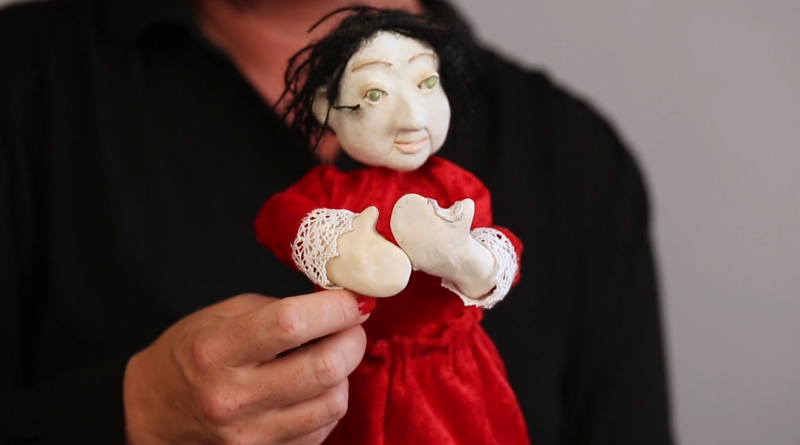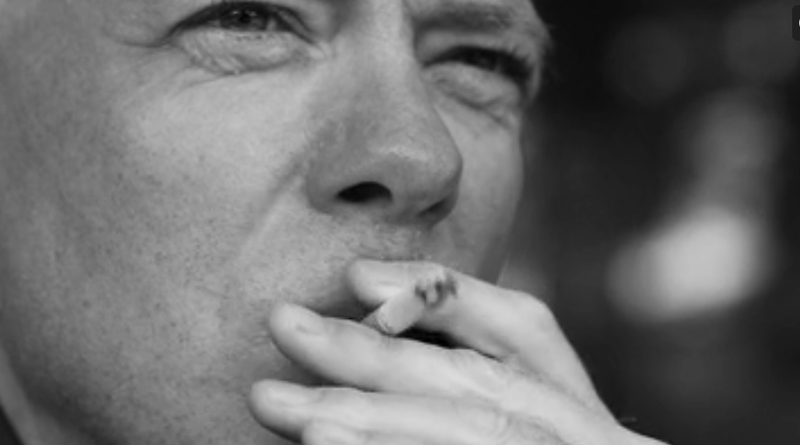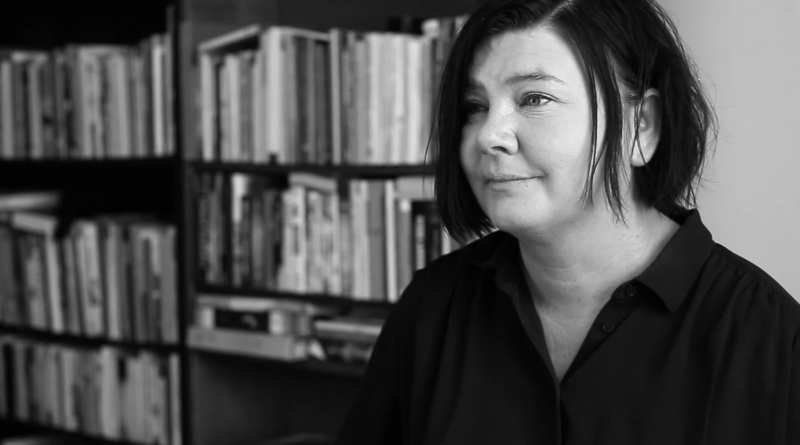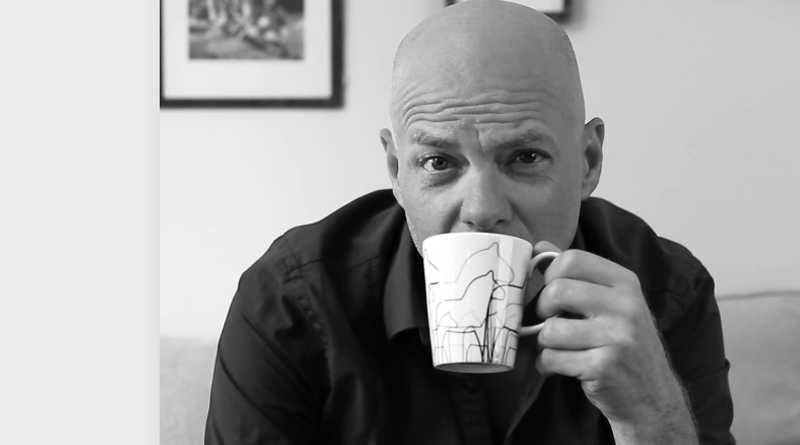THE GIRL AND THE EGG BY THORKELL AUGUST OTTARSSON

Directed by Thorkell August Ottarsson/ Reviewed by Antonio Rozich
When creating a film, the filmmaker starts with an idea. That idea brews inside the filmmaker’s mind long before it hits the cameras. It grows with the passing time until it’s ripe to exit the unconsciousness and enter the conscious mind.
But in some cases, the idea isn’t ripe. Filmmakers want to shoot a movie and desperately need an idea. Although they search back and forth, they can’t seem to find it anywhere. But for some, the idea just comes.
I like to imagine this was the beginning of Ottarsson creating The Girl and the Egg. One day, that one filmmaking idea that’s just too good to pass, came to him. There was no struggle, back and forths, and crumbled pieces of paper (or deleted text files). The idea manifested itself and Ottarsson had no choice but to create the film.
The backbone of The Girl and the Egg is a simple premise that merges that blurry void between creative storytelling and technical filmmaking.
 The story follows Henrik meeting Sunneva on a seemingly boring afternoon in the park. The scenery of the two people inside the park is accompanied by a gentle piano tune that makes the most of the whole film’s audio. Starting a conversation, Henrik discovers that Sunneva is mute.
And there’s your film idea. Having a mute person inside a silent movie. Of course, that’s just an idea, it’s up to the filmmaker to further expand on the idea and tell a story worthwhile the audience’s time.
It’s one of those ideas that’d be interesting to give to a dozen filmmakers to observe different creative approaches.
In the case of The Girl and the Egg, Ottarsson does a great job. The gentle dynamic of the building relationship between Sunneva and Henrik is visible with each new shot -- two people that begin as complete strangers, visibly develop right in front of your eyes.
More importantly, the relationship’s development isn’t cheesy and Ottarsson ensures to keep the centerpiece of the story in there constantly.
Being a black and white film, Ottarsson pulls out another ace when he introduces the color. Just as Sunneva is to tell her life story, colors brighten up to represent another chapter. What’s interesting here is that filmmakers often use brightness and the sudden jump from black and white to color as a sign of things coming up.
But in this case, it’s a bit more indecisive. The story inside the story is far darker and together with Henrik, you can feel getting sucked in.
The story follows Henrik meeting Sunneva on a seemingly boring afternoon in the park. The scenery of the two people inside the park is accompanied by a gentle piano tune that makes the most of the whole film’s audio. Starting a conversation, Henrik discovers that Sunneva is mute.
And there’s your film idea. Having a mute person inside a silent movie. Of course, that’s just an idea, it’s up to the filmmaker to further expand on the idea and tell a story worthwhile the audience’s time.
It’s one of those ideas that’d be interesting to give to a dozen filmmakers to observe different creative approaches.
In the case of The Girl and the Egg, Ottarsson does a great job. The gentle dynamic of the building relationship between Sunneva and Henrik is visible with each new shot -- two people that begin as complete strangers, visibly develop right in front of your eyes.
More importantly, the relationship’s development isn’t cheesy and Ottarsson ensures to keep the centerpiece of the story in there constantly.
Being a black and white film, Ottarsson pulls out another ace when he introduces the color. Just as Sunneva is to tell her life story, colors brighten up to represent another chapter. What’s interesting here is that filmmakers often use brightness and the sudden jump from black and white to color as a sign of things coming up.
But in this case, it’s a bit more indecisive. The story inside the story is far darker and together with Henrik, you can feel getting sucked in.
 Since the film’s title is The Girl and the Egg, you can guess that Sunneva is the girl. But obviously, Henrik isn’t the egg.
The egg gets introduced in Sunneva’s story and is another of the movie’s strong points. Ottarsson does a perfect job of telling just enough for the audience to get an idea of what the egg might be. At the same time, the film leaves enough breathing room to make it unsure what the egg represents.
Although at moments it’s incredibly obvious, it’s sure that if you watched the film right now with your friends, each would come with a similar but also different opinion.
Here’s the big question, something every film should have, but many fall short. Without the audience wondering what something is or what might happen next, you rarely have a story worth telling. But through a minimum set of words, two actors, and one egg, Ottarsson manages to tell a unique and inspirational tale.
The ending serves as the final puzzle piece that, in a way, represents the cycle of change.
Since the film’s title is The Girl and the Egg, you can guess that Sunneva is the girl. But obviously, Henrik isn’t the egg.
The egg gets introduced in Sunneva’s story and is another of the movie’s strong points. Ottarsson does a perfect job of telling just enough for the audience to get an idea of what the egg might be. At the same time, the film leaves enough breathing room to make it unsure what the egg represents.
Although at moments it’s incredibly obvious, it’s sure that if you watched the film right now with your friends, each would come with a similar but also different opinion.
Here’s the big question, something every film should have, but many fall short. Without the audience wondering what something is or what might happen next, you rarely have a story worth telling. But through a minimum set of words, two actors, and one egg, Ottarsson manages to tell a unique and inspirational tale.
The ending serves as the final puzzle piece that, in a way, represents the cycle of change. And from the beginning to the end, Ottarsson stays loyal to his craft to constantly combine the storytelling with the technicalities of filmmaking. Even at the very end, he uses the simplest of filmmaking tricks in a most unique way.
All of this makes up for a complete piece of art. When you start watching the film, you might even question the musical choice or maybe even the scenery choices. But as the story moves forward, the curtain will reveal more and more of a piece that will put a smile on your face. A smile created not through words, but pure emotion.
And from the beginning to the end, Ottarsson stays loyal to his craft to constantly combine the storytelling with the technicalities of filmmaking. Even at the very end, he uses the simplest of filmmaking tricks in a most unique way.
All of this makes up for a complete piece of art. When you start watching the film, you might even question the musical choice or maybe even the scenery choices. But as the story moves forward, the curtain will reveal more and more of a piece that will put a smile on your face. A smile created not through words, but pure emotion.


